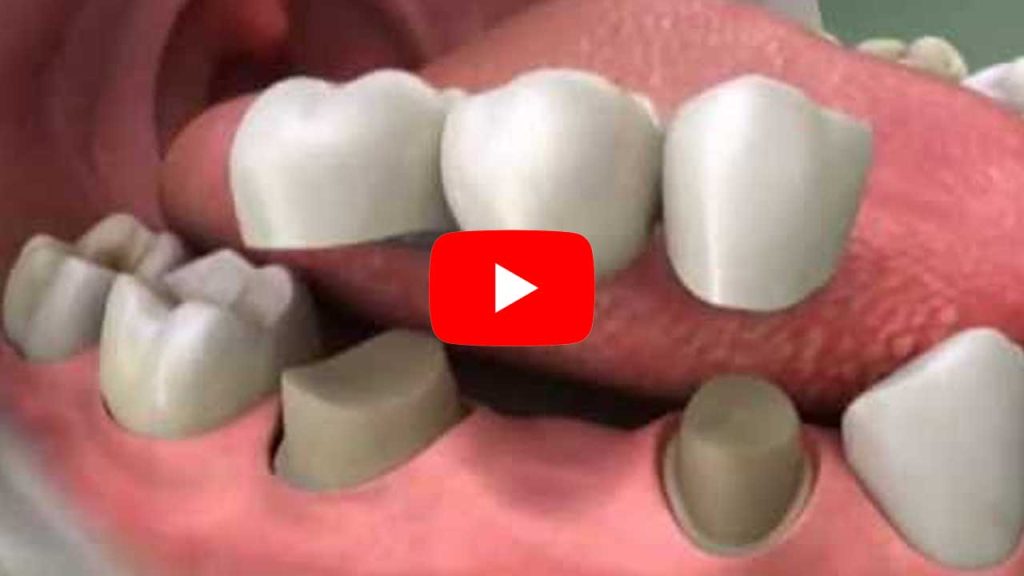What are traditional dental bridges?
A traditional dental bridge consists of one (or more) false tooth (teeth), also known as pontic(s). The pontic is held in place by creating two crowns cemented on the abutment teeth on both sides of the gap.

If you miss one or two teeth and suffer from an unsightly gap in your smile, a traditional bridge could be a solution. The same is true when you have damaged teeth that ordinary restorations cannot restore.
Yet, traditional bridges are only an option when you have natural teeth surrounding your missing teeth.
Besides improving your smile, a dental bridge can help you:
- chew better, distributing the force more evenly
- prevent your healthy teeth from shifting and moving out of their correct position
- restore your pronunciation and speech
- maintain the shape of your face
Traditional dental bridges: a two steps procedure
The initial step consists in preparing your teeth on each side of the area that needs to receive the crown or crowns. Dr. Salim, our cosmetic dentist, will then make an impression of the entire space.
After this step, he will place a temporary or transitional bridge inside your mouth.
In a following visit, Dr. Salim will place, adjust and then cement the fixed bridge in place to prevent shifts from occurring.
With bridges, you must maintain ongoing preventive dental care visits and keep a good oral hygiene.
1st consultation is complimentary for new patients, book an appointment today
With decades of cosmetic dentistry experience, we will create a treatment plan to improve your smile. Cosmetic details and pain management are some of the most important factors.
Pros of a traditional bridge
To help you with out-of-pocket costs, we offer the following solutions to our patients. They will significantly ease the process:
- Unlike dental implants, a traditional bridge will not need any invasive surgical procedure. As a result, a dental bridge is less invasive and cheaper.
- You will not find yourself complaining about your dental bridge moving around, as may be the case with dentures. The former is firmly anchored to other teeth and not to gums like traditional dentures.
- Crowns are difficult to tell from natural teeth, unlike dentures which are noticeable to others.
Cons of tradition bridges
We will have to shave down the adjacent teeth and remove enamel and, most often sound tooth structure to fit the crowns that support the bridge. As a result, your shaved-down teeth could become sensitive and/or susceptible to tooth decay.
It is also difficult to properly floss the teeth that make up the bridge as traditional flossing methods do not work. A floss threader needs to be used. Unfortunately, many patients with dental bridges don’t use floss threader due to its difficulties. As a result, patients may suffer from tooth decay and/or periodontal (gum) disease.
A dental implant stimulates bone growth by transmitting the force exerted during chewing onto the jawbone. A bridge will not do that, and the bone below the fake tooth (teeth) will deteriorate, which could lead to facial sagging and other issues.
Traditional bridges will last only 10 to 15 years at most, well below the 25 years life expectancy of dental implants.
Costs of traditional dental bridges
Traditional bridges cost around $2,000-$5,000 at SuttonPDA. The exact final cost will vary depending on the following:
- Number of teeth involved
- More procedures required (e.g., treating gum disease, core build-up)
- Simplicity or otherwise, of the procedure
- Materials chosen (composite resin, zirconia, metal alloy covered in resin
Insurance coverage and financing available for traditional dental bridges in New York
You can expect that dental insurances often cover dental bridges. However, different companies cover the cost of these procedures at different rates.
Sutton Dental Associates participates with most dental insurances. Our treatment coordinator can help guide you through obtaining all the relevant information needed by your insurance company.
SUTTON PLACE DENTAL ASSOCIATES ON THE WEB






